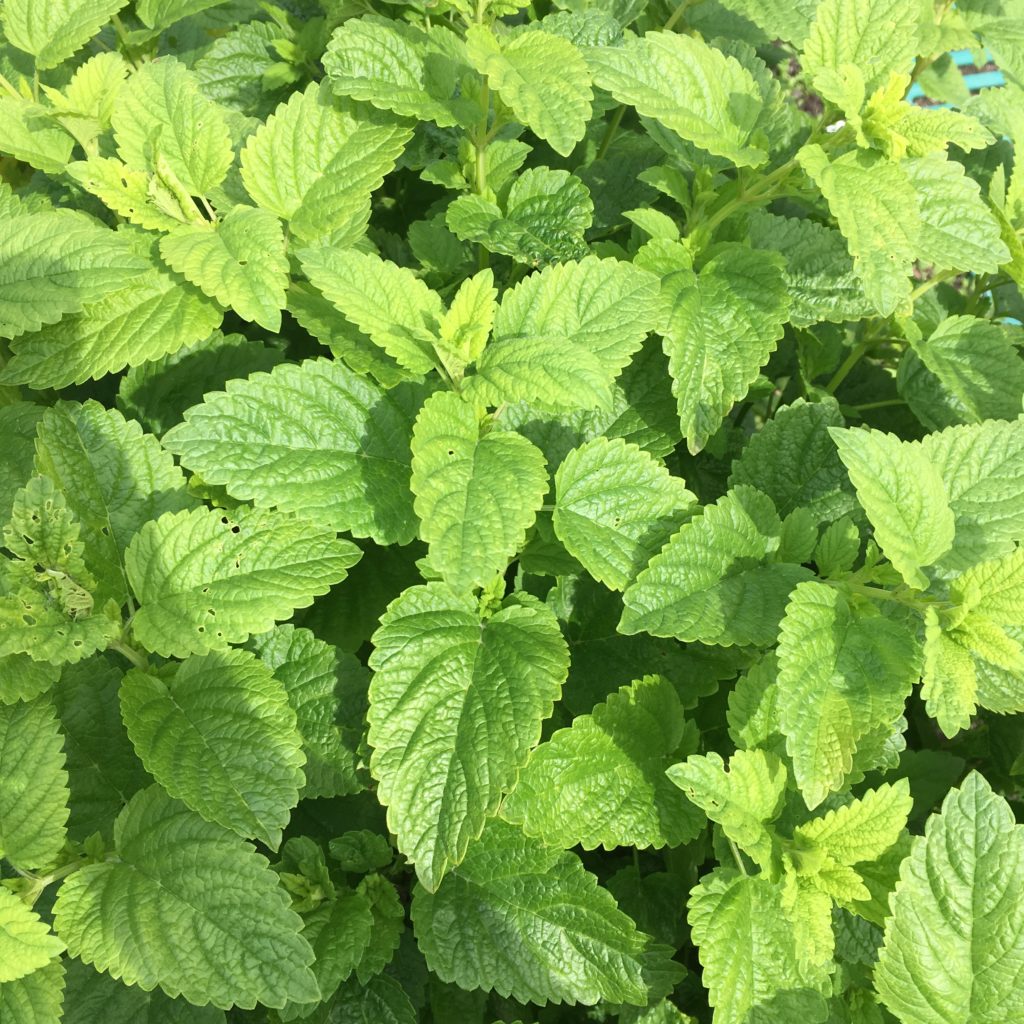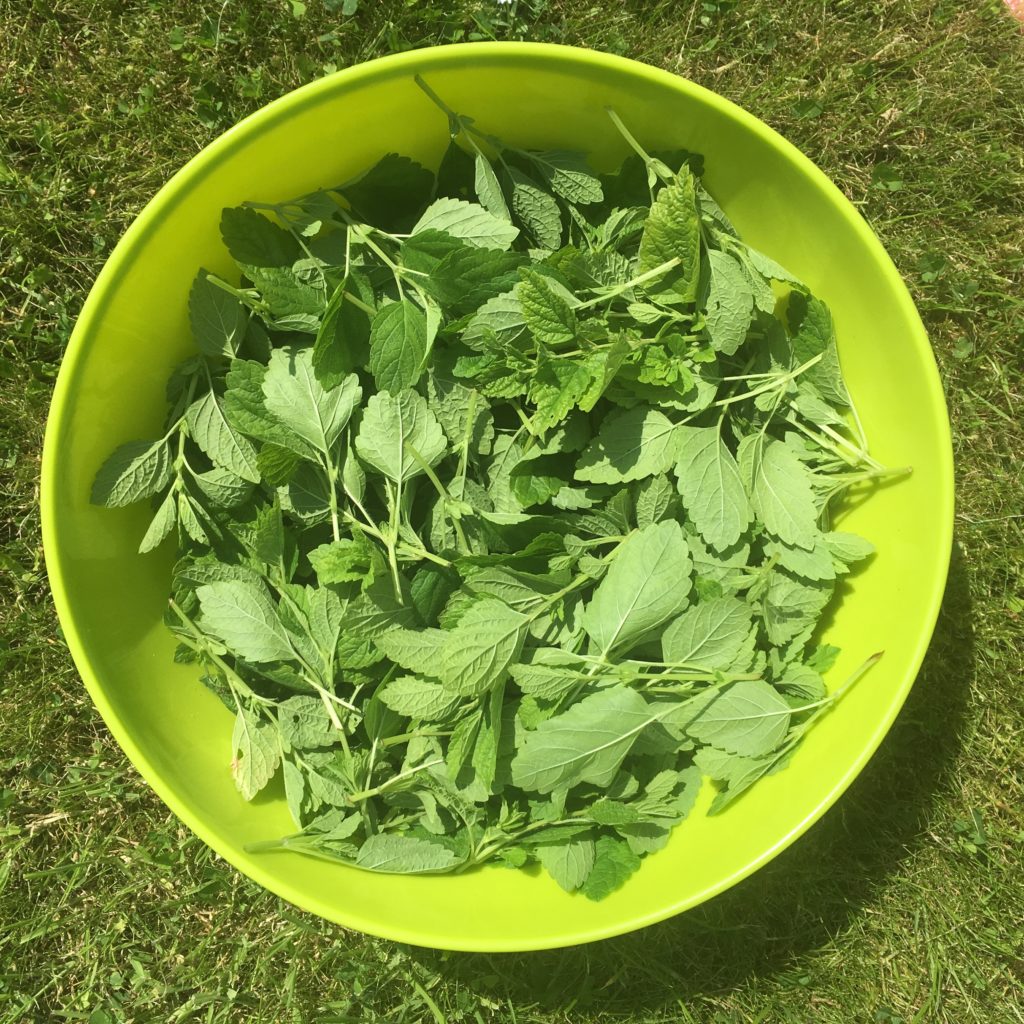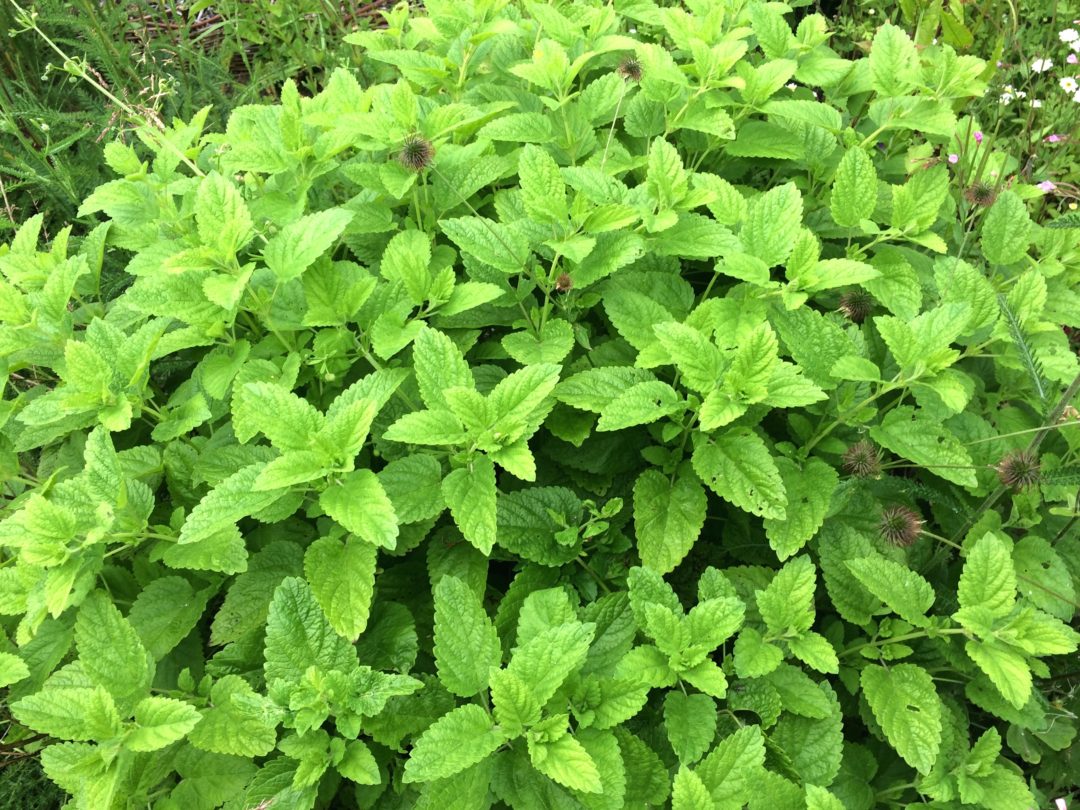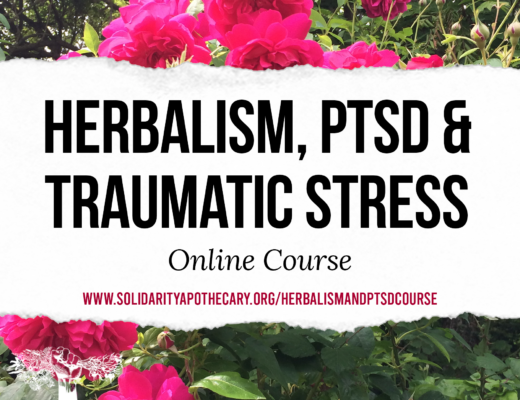Please note these plant profiles are a work in progress. I will always be adding to them as I keep learning about the amazing world of plant medicine.
Botanical Overview
Latin name: Melissa officinalis
Plant family: Lamiaceae (Mint family)
Identification: It has square stems and opposite leaves that are slightly heart-shaped and toothed. They grow 2-3 inches long and are very fragrant and lemony tasting. The flowers of lemon balm grow in whorls around the stem and are composed of small white blossoms. The plants are upright and branching, growing 3 – 3.5 feet tall (1).
Other species: Lemon balm can be mistaken for other members of the mint family due to their square stems, however, their strong lemony taste distinguishes them.
Folk names in English: Lemon balm, Melissa, Balm, Bee Balm, Dropsy Plant, Heart’s Delight. Officinalis means officially used as a medicinal plant. ‘Meli’ comes from the Greek word for honey.
Chemical constituents: Essential oil rich in aldehydes, Flavonoids, Triterpenes, Polyphenols, Tannins (6).
Food and nutrition
Lemon balm tastes delicious in hot and cold drinks and is a fantastic way to introduce people to medicinal plants. It can be combined with other mints as a cooling blend for hot summer days.
Ecological role
Lemon balm is an aromatic mint that spreads easily. It is a fantastic understory plant in forest gardens.
Cultivation: Lemon balm grows in the sun or semi-shade. Organic herb farmers Melanie and Jeff Carpenter say that lemon balm likes good, fertile, well-drained, loamy soil with ample soil moisture. They sow the seeds in early spring. The seeds are light-dependent so only cover them very lightly in any seed trays. You can also take softwood cuttings (1). In their experience, they tend to grow lemon balm for about 3 years in one location, however, where I live we have grown lemon balm for more nearly a decade in the same place with little change in quality (but we are not harvesting on a commercial scale). They grow lemon balm with 12 inches within rows and 28 inches between rows at 2 rows per bed. They also say why it’s important to mulch: “Mulching decreases soil splash that can not only make the leaves dirty but can also reduce foliar diseases and leaf spots” (1).
Harvesting: Melanie and Jeff write that “The key to maintaining quality is to dry lemon balm at lower temperatures with good airflow and minimal exposure to light. Airflow and lower drying temperatures are essential to minimise the volatilization of key essential oils. It also prevents lemon balm from turning brown.” (1).
Energetics
- Temperature: Cooling
- Moisture: Drying
- Tone: Relaxant
- Tissue State: Heat/excitation, Wind/tension
- Taste: Sour
Health challenges supported by Lemon Balm
Herbal actions: Carminative, Antispasmodic, Diaphoretic, Sedative, Antiviral effect against herpes viruses, Nervine (6)
Nervous system health: Lemon balm is an incredible support for the nervous system. It is relatively mild in the sense that it’s not hypnotic so it won’t interfere with your everyday tasks or make you feel drowsy or ‘knocked out’ like other hypnotic nervines. It is also slightly trophorestorative so can support with recovery and strengthen burned out nerves. This gives lemon balm a role in support for health challenges such as stress, anxiety and hyperadrenalism. Herbalist Kami McBride writes how lemon balm has a palliative effect on excessive mental activity and moderates the intensity of mood swings and mild depression. She uses it in her emotional rescue cordials. She also makes an emotional rescue bath with fresh or dried lemon balm, lemon verbena, rose geranium, chamomile and rose petals (4).
Heart palpitations: Sajah says that because of its nerving and mild antispasmodic actions, lemon balm can not only calm down a stressed heart but relax tension throughout the vasculature, thus helping to lower blood pressure (7). It can be combined with other cardiovascular supportive herbs such as hawthorn, linden and motherwort.
Cognitive function: Lemon balm has a nootropic herbal action – it can help calm the nervous system and focus a scattered mind. Anne McIntyre writes that its antioxidant compounds are useful for protecting the nervous system against free radical damage and preventing age-related mental decline and degenerative problems such as Alzheimer’s (5).
Headaches, vertigo and tinnitus: Anne McIntyre says that lemon balm can be used to relieve headaches, migraine, vertigo and tinnitus (5). Sajah states that lemon balm is a super useful remedy for vascular tension-based headaches because of lemon balm’s action to relax constriction (7).

Digestive upset such as gas, wind and spasms: Sajah writes how lemon balm can help to relax spasm and cramping, increase circulation and dispel excessive gas and wind (7). It has an antispasmodic action helping to relax tension throughout the entire system. It is, therefore, a useful digestive remedy where there is digestive upset relating to a heightened nervous system.
Hyperthyroidism: Sajah considers lemon balm a primary remedy for the treatment of hyperthyroidism because it operates on the entire symptomatic pattern generated by this condition, however, it is a palliative remedy (not curative). He describes this action of lemon balm: “First off, it helps to settle the pattern of heat/ excitation that typically accompanies hyperthyroidism- cooling inflammation, oxidation, catabolic excess, and overstimulation of the tissues. It also helps to calm and restore an overstimulated nervous system and the many symptoms that often accompany that, specifically here the excessive heart rate and palpitations that many hyperthyroid patients experience.”
David Hoffman also comments that: “Lemon Balm’s hormone-regulating effects have also been well documented in the laboratory. Freeze-dried aqueous extracts have been shown to inhibit many of the effects of thyroid-stimulating hormone (TSH) on the thyroid gland. In laboratory studies, it interfered with the binding of TSH to plasma membranes and inhibited the enzyme iodothyronine deiodinase in vitro. It also inhibits the receptor binding and other biological activity of immunoglobulins in the blood of patients with Graves’ Disease, a condition that causes hyperthyroidism.”
Fever management: Lemon balm is something I have turned to during high temperatures time and time again. It is a classic fever remedy in western herbal traditions and is brilliantly combined with other mints, elderflower and yarrow. It has a relaxant diaphoretic action. Sajah writes that by relaxing tension throughout the entire organism (predominantly through its nervine sedative action), lemon balm can help the blood flow to the surface, relax the pores of the skin, and release any internal heat leading to the fever.
Skin healing: Kami McBride uses lemon balm in a skin-healing bath combined with chamomile, elderflowers, lavender, rose geranium and rose petals. She also adds lemon balm to a ‘cool me down’ foot soak with rose petals and peppermint.
Fever blisters and cold sores: Kyle D. Christensen writes how fever blisters and cold sores are effectively treated with an oil or ointment made from lemon balm (2).
Enterovirus71: Stephen Buhner in his book Herbal Antivirals, writes: “In addition to the systemic antibacterials, lemon balm, especially a prepared oil infusion, is specific for the blistering that enterovirus71 can cause on the palms and soles of the feet (3).
Vaginal herpes: Buhner says that lemon balm can be used to treat vaginal herpes: “Prepare a douche by combining 1 ounce of a berberine plant (e.g. Goldenseal, barberry tincture etc) and 1 ounce of lemon balm tincture in a pint of water and use it to douche 3 times daily.” (3)
Herpes zoster (Shingles): Lemon balm can be used as part of an integrative treatment for shingles. Buhner describes a protocol in his book Herbal Anti Virals:
1) Systemic antivirals
2) Immune formulations
3) Topical creams for skin outbreaks
4) Treatments to reduce nerve pain and regenerate nerve cells
Lemon balm tincture can be taken internally and a lemon balm infused oil or cordial, applied topically daily.

Cautions: Lemon balm is generally very safe. However, because of its action on the thyroid, it is recommended to not use it in cases of hypothyroidism or when someone is taking thyroid medication. There should also be cautious of using it with other sedatives such as barbiturates or benzodiazepines.
Lemon Balm and the Solidarity Apothecary
I adore lemon balm and include it in tinctures and glycerites for nervous system support. Many people express stress through their digestive systems and so lemon balm is a fantastic ally. It’s flavour also makes it accessible to people new to herbalism. I combine it with rose and hawthorn in my Brave Heart Blend for people experiencing state repression.
Sources
1. The Organic Medicinal Herb Farmer, Jeff and Melanie Carpenter
2. Herbal First Aid, Kyle D. Christensen
3. Herbal Antivirals, Stephen Harrod Buhner
4. Herbal Kitchen: 50 Easy-to-Find Herbs and Over 250 Recipes to Bring Lasting Health to You and Your Family, Kami Mcbride
5. The Complete Herbal Tutor, Anne McIntyre
6. Lemon Balm monograph, The Plant Medicine School
7. Lemon Balm monograph, Materia Medica Monthly produced by the Sajah Popham at the School of Evolutionary Herbalism




